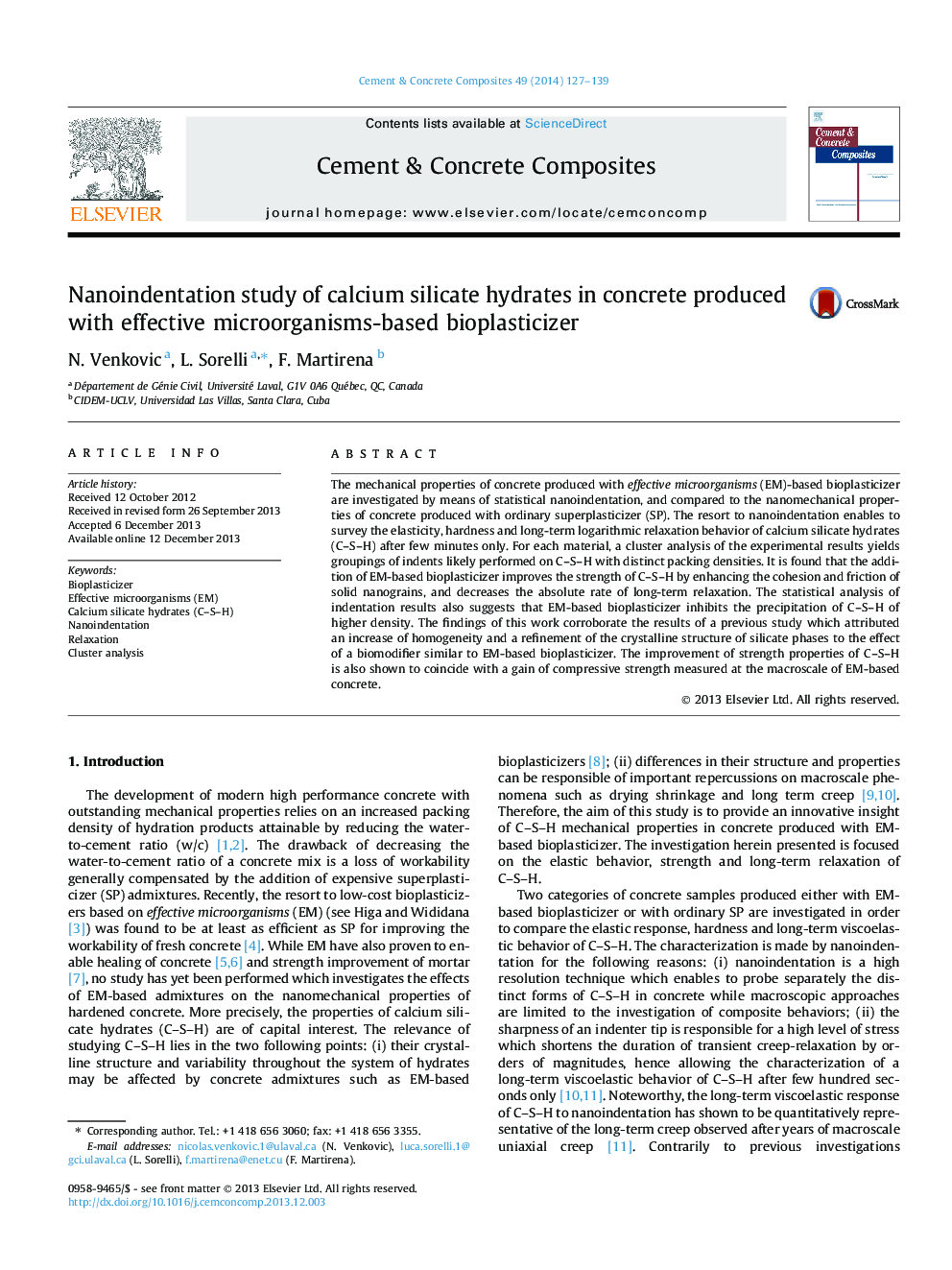| Article ID | Journal | Published Year | Pages | File Type |
|---|---|---|---|---|
| 1454679 | Cement and Concrete Composites | 2014 | 13 Pages |
The mechanical properties of concrete produced with effective microorganisms (EM)-based bioplasticizer are investigated by means of statistical nanoindentation, and compared to the nanomechanical properties of concrete produced with ordinary superplasticizer (SP). The resort to nanoindentation enables to survey the elasticity, hardness and long-term logarithmic relaxation behavior of calcium silicate hydrates (C–S–H) after few minutes only. For each material, a cluster analysis of the experimental results yields groupings of indents likely performed on C–S–H with distinct packing densities. It is found that the addition of EM-based bioplasticizer improves the strength of C–S–H by enhancing the cohesion and friction of solid nanograins, and decreases the absolute rate of long-term relaxation. The statistical analysis of indentation results also suggests that EM-based bioplasticizer inhibits the precipitation of C–S–H of higher density. The findings of this work corroborate the results of a previous study which attributed an increase of homogeneity and a refinement of the crystalline structure of silicate phases to the effect of a biomodifier similar to EM-based bioplasticizer. The improvement of strength properties of C–S–H is also shown to coincide with a gain of compressive strength measured at the macroscale of EM-based concrete.
